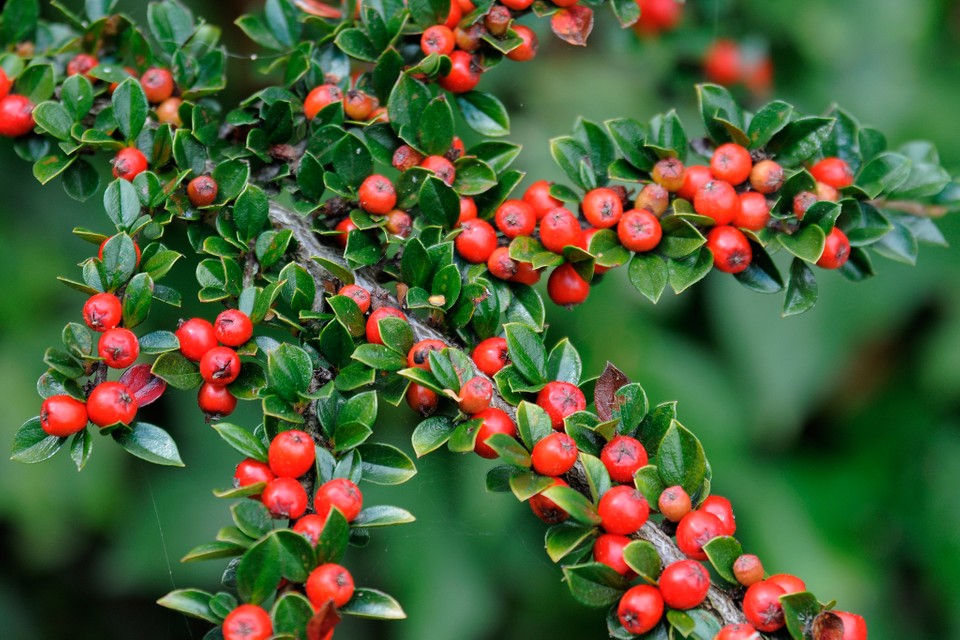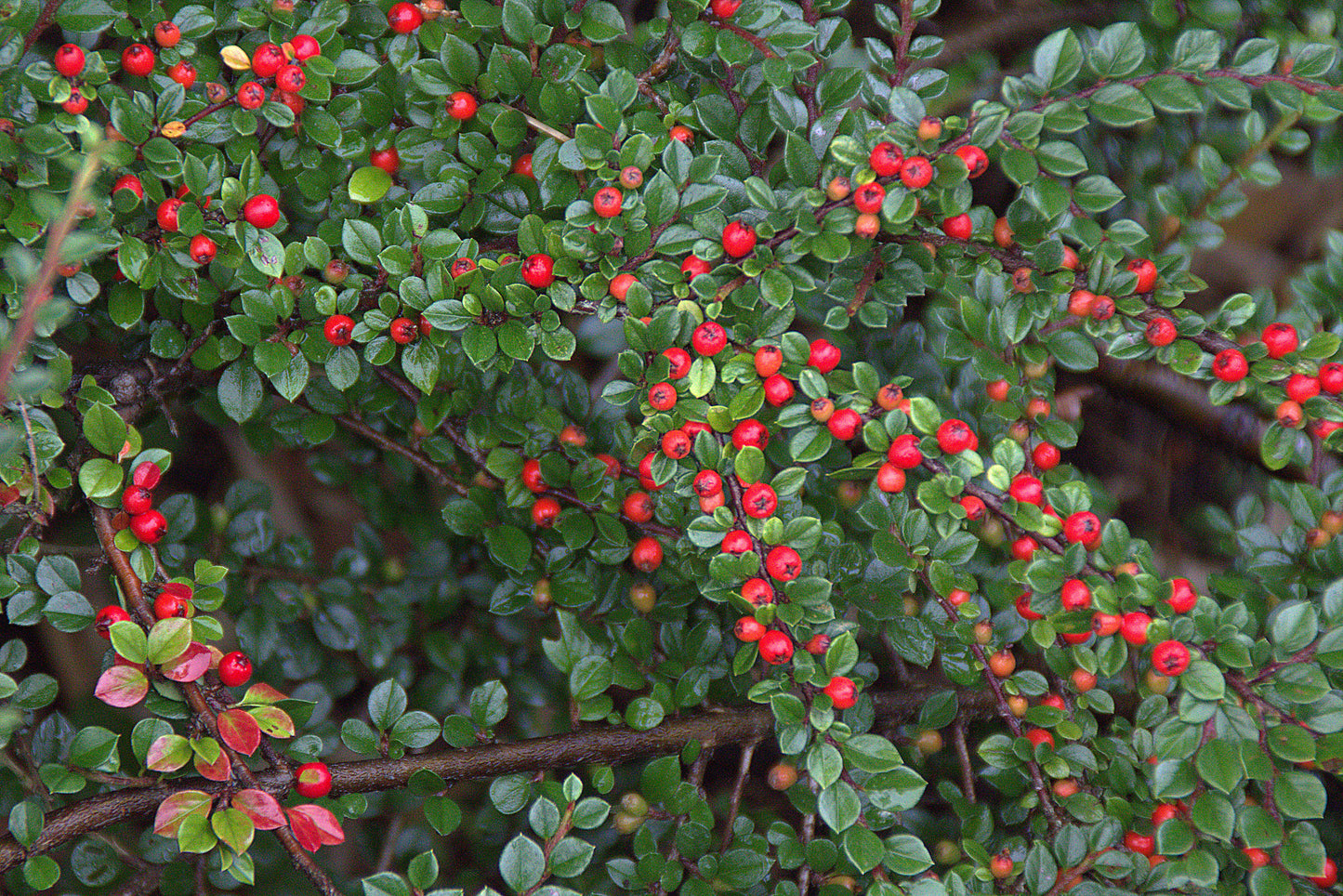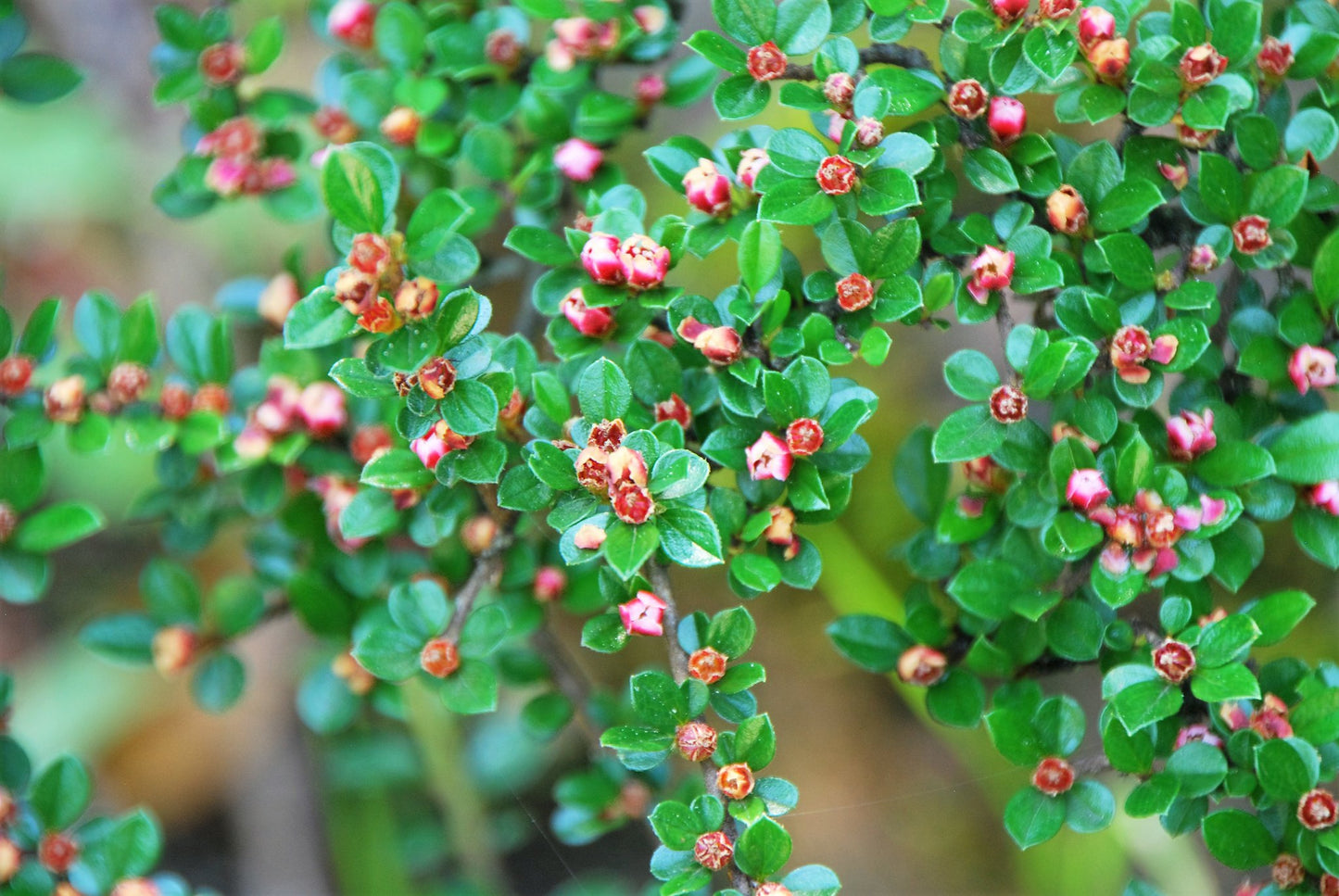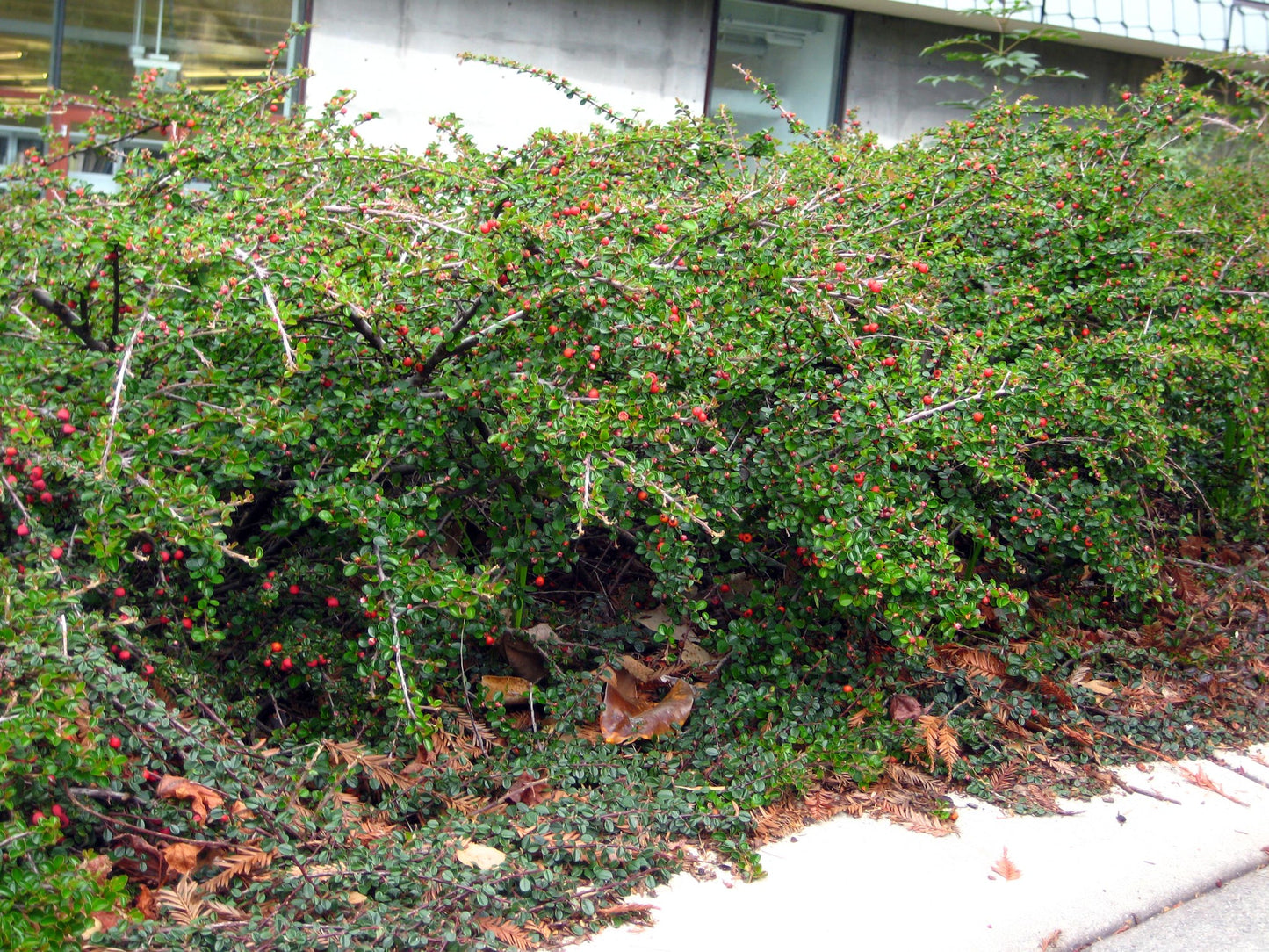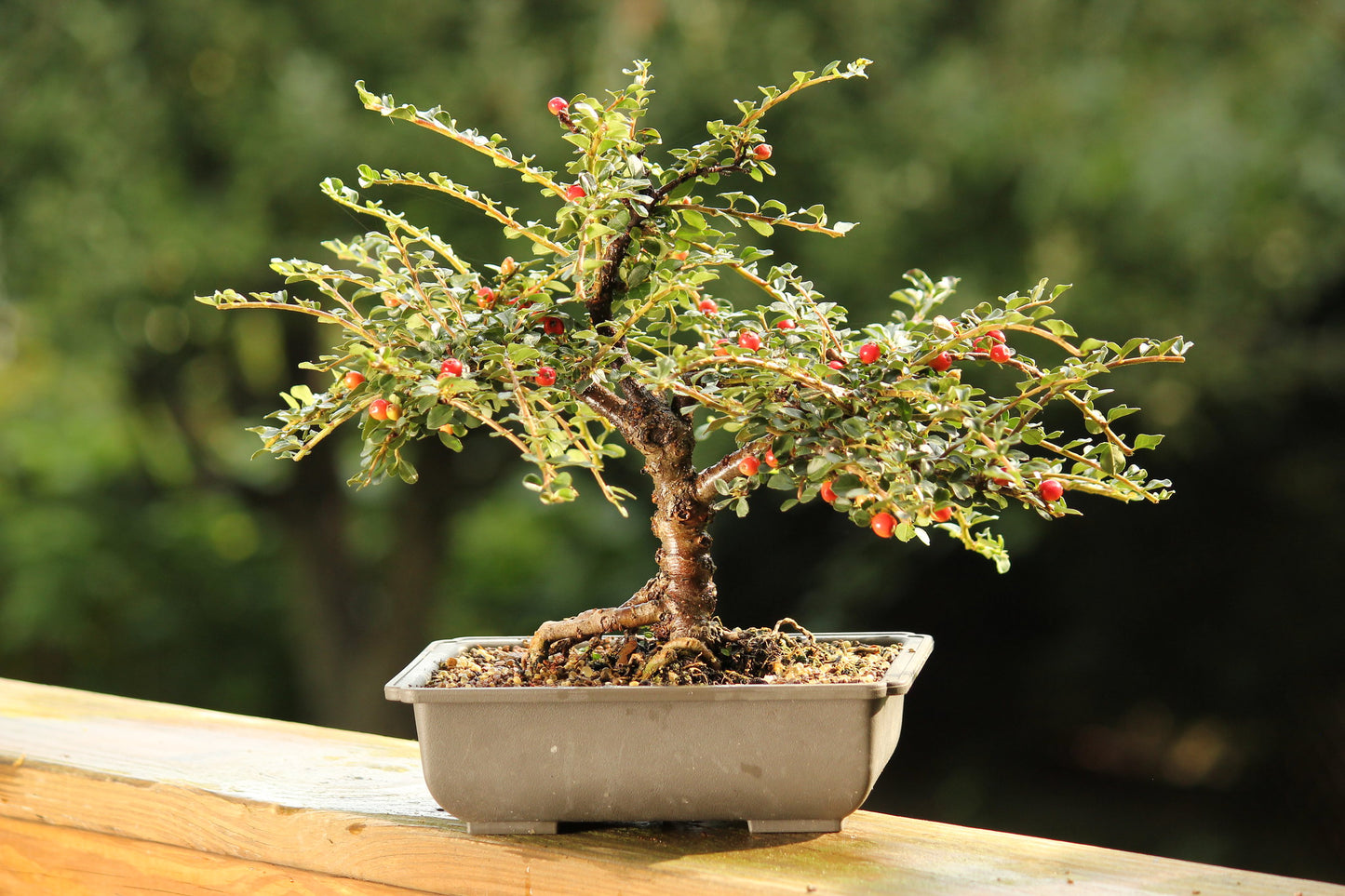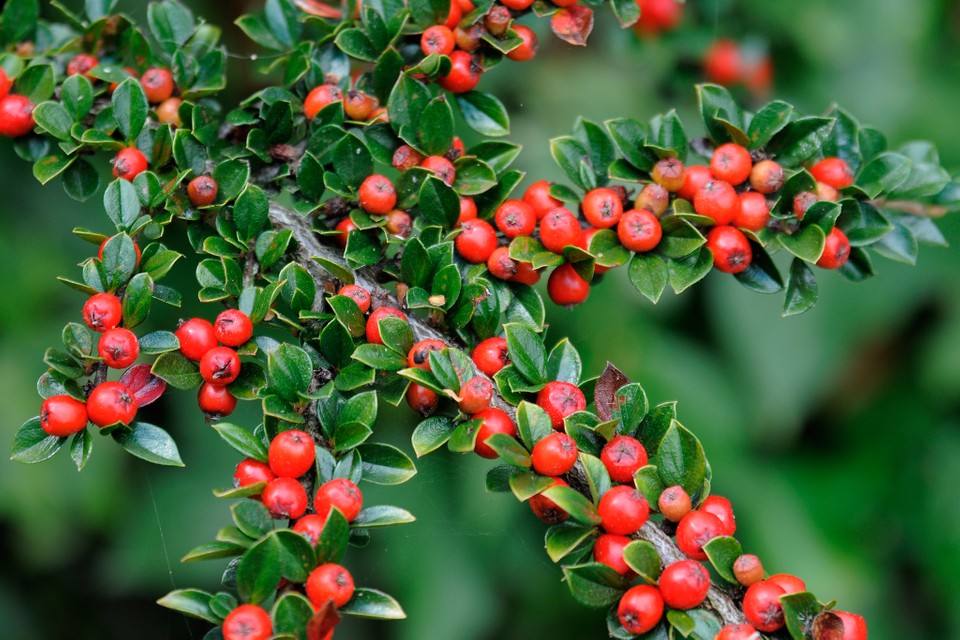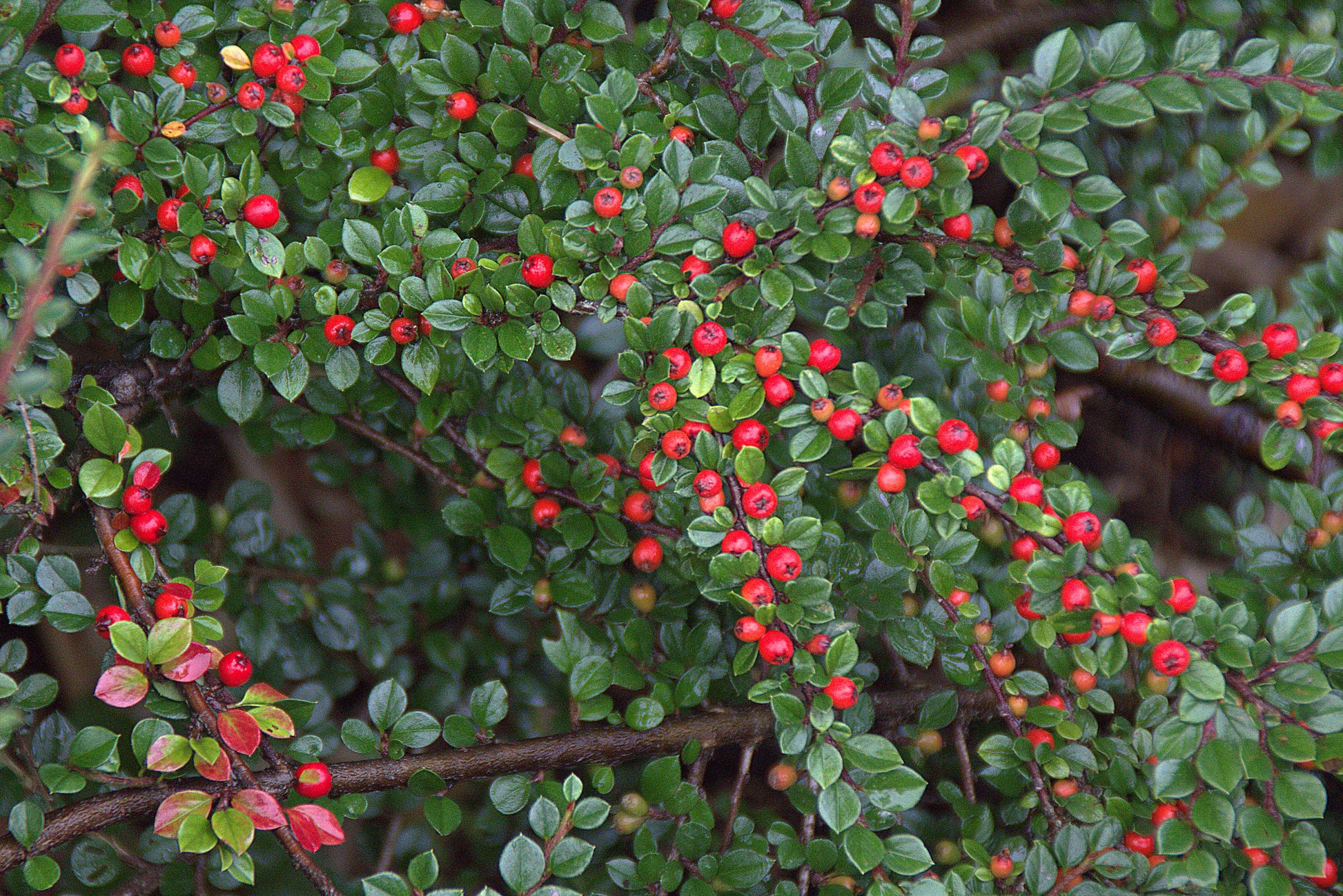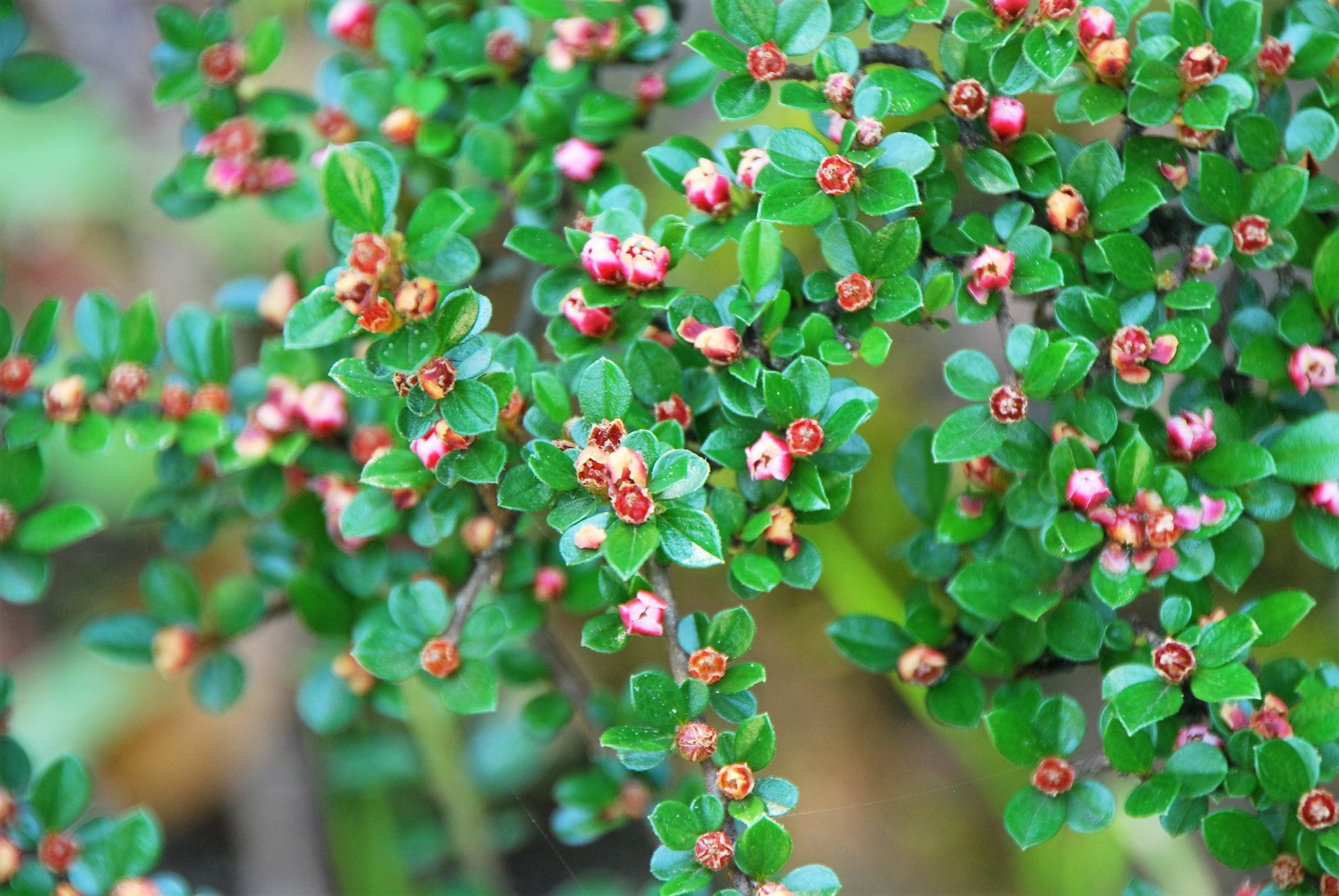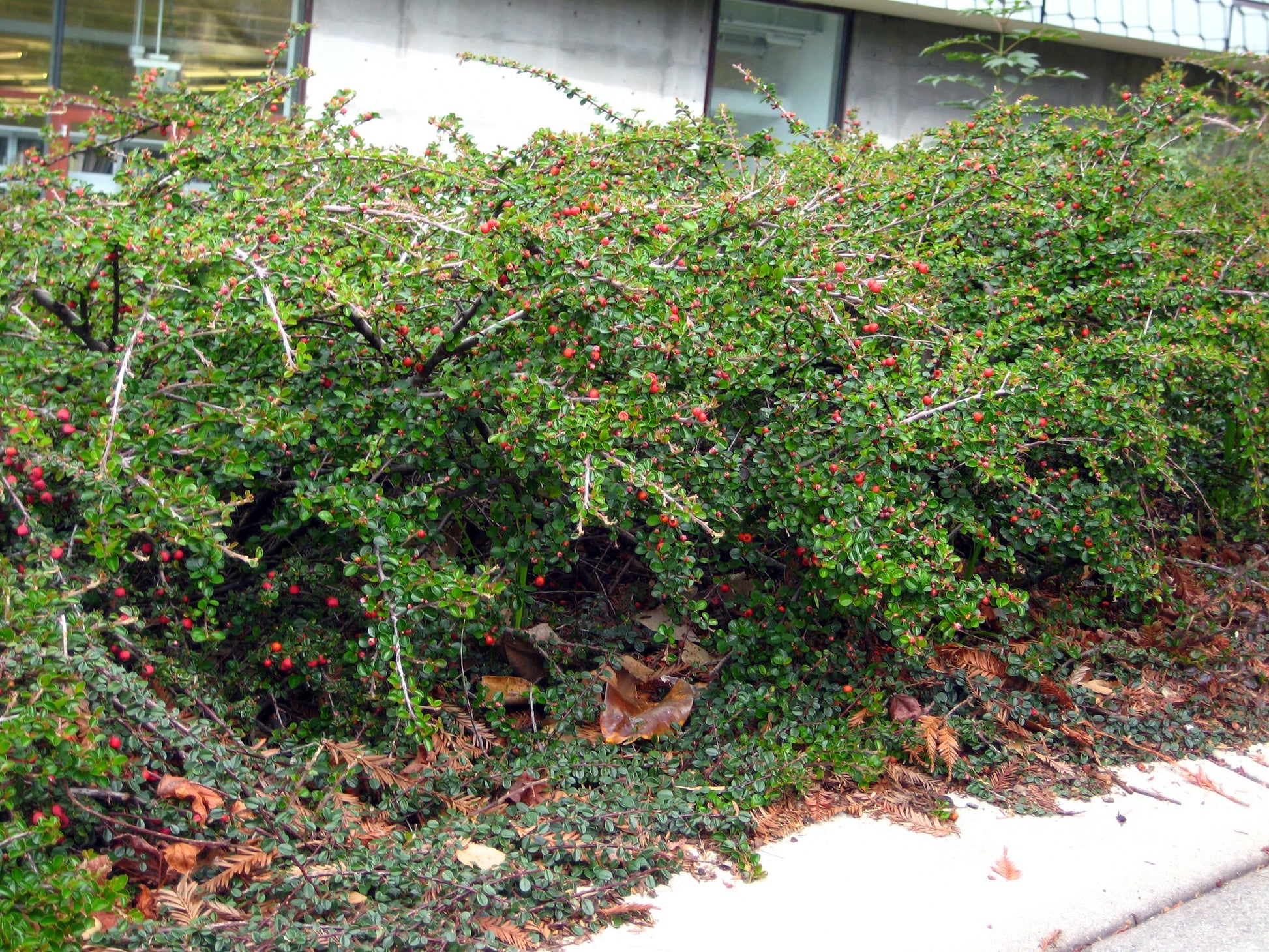Floridaseeds
Rockspray Cotoneaster Cotoneaster horizontalis 100 Seeds USA Company
Rockspray Cotoneaster Cotoneaster horizontalis 100 Seeds USA Company
Couldn't load pickup availability
Cotoneaster horizontalis, commonly called rockspray cotoneaster, is a coarse, dense, slow-growing, semi-prostrate shrub that grows to 2-3’ tall and spreads over time to 6-8’ wide on stiff, flattened, horizontal branching that features branchlets arranged in fishbone patterns. Branching becomes somewhat tiered over time. Plants are deciduous in the northern parts of their growing range, but semi-evergreen in the far southern locations. Round to elliptic, glossy dark green leaves (to 1/2” long) are attractive throughout the growing season. Leaves on deciduous plants turn reddish-purple in fall. Five-petaled, tiny pink flowers appear singly or in pairs in late spring. Bees are attracted to the flowers. Flowers are followed by bright scarlet fruits (1/4” wide) that mature in late summer to fall. Best grown in moist, loamy, well-drained soils in full sun to part shade. Good drainage is important. This is a tough and adaptable plant that can withstand considerable poor soils. Established plants tolerate drought. Rockspray cotoneaster is a valuable landscape plant that offers good foliage, flowers and fruit. Mass as a woody ground cover for sunny areas in the landscape including banks and slopes where it can also provide some erosion control. Sprawl over rocks in rock gardens or along stone walls. Can be espaliered. Hardy in zones 5-7.
Growing Instructions for the Rockspray Cotoneaster
The seeds have a period of dormancy. They can be planted outdoors in the fall or winter for spring germination or they can be cold stratified to simulate winter conditions and to break their dormancy at any time of the year. 1. Soak the seeds in water for 24 hours. 2. Put the seeds in a ziplock bag. 3. Put the bag in the refrigerator and leave it there for 3 months. 4. The seeds like moist, well-drained soil. Prepare a mixture of half potting soil and half sand, perlite or vermiculite. Put the soil in a pot. 5. Sow the seeds on the soil. 6. Cover the seeds with a layer of that is 3/8 of an inch thick. 7. Water the soil so that it is moist but not wet. 8. When the seedlings are a few inches tall, they can be transplanted.
Materials
Materials
Shipping & Returns
Shipping & Returns
Dimensions
Dimensions
Care Instructions
Care Instructions
Share
